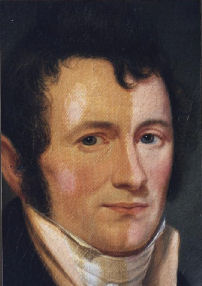 The tasks in the PROPAINT project are organized in 6 Work Packages:
The tasks in the PROPAINT project are organized in 6 Work Packages:
Work Package 1:
Measurements of microclimates in glass-frames for paintings in use will be performed with previously developed dosimeters from EC projects, with passive gas samplers and climate measurement instruments. Exposure locations in microclimate frames in use will be available with museums partners and subcontractors and possibly at other end user locations. New microclimate frames will be provided by the SME partner, Artyd. The dosimeters will be fit and amended where necessary for use in microclimate frames of choice, – based on end user requirements discussed in the first end user workshop (WP5).
Tasks:
Task 1.1: Use of prepared (varnish coated) PQC array damage dosimeters.
Task 1.2: Use of glass dosimeters from the AMECP project for dose measurements in microclimate frames.
Task 1.3: Use of polymer film as dosimeters (EWO-generic dosimeter, EWO-G).
Task 1.4: Simultaneous measurement of separate climate and pollution parameters.
University of Pisa will do analysis of varnish ageing
Work Package 2:
Samples consisting of a number of traditional and modern synthetic varnishes used for conservation and restoration work in museums will be prepared and exposed in microclimate frames in museums and in accelerated tests in the laboratory, before chemical and physical analysis is performed to assess the preservation effect of using microclimate frames.
Tasks:
Task 2.1 Preparation of varnish samples on selected substrates for exposure in the laboratory.
Task 2.2 Laboratory exposures of prepared varnish samples.
Task 2.3 Comparative physical/chemical analysis of deterioration of exposed varnish samples.
Task 2.4 Comparative analyses of varnish samples from microclimate frames and from open exposure.
Task 2.5 Analysis of exposed varnish coatings on the piezoelectric quartz crystals.
Work Package 3:
Analysis and integration of environmental data with damage assessment data, obtained in WP1, from the MASTER, AMECP-glass and MIMIC-dosimeters will be performed. Levels of expected damage at the locations of monitoring will be correlated with environmental conditions. Problematic microclimates will be identified. Data interpretation will follow protocol and be underpinned by the databases established in the previous projects. The interpretation will add to existing databases for the dosimeters from other locations than microclimates in glass-frames.
Tasks:
Task 3.1: Evaluation of the environments in the microclimate frames.
Task 3.2: Evaluation of the quality of the environments in the microclimate frames.
Task 3.3: To determine threshold values that must not be exceeded inside the microclimate frames in order to avoid damage from organic acids.
Task 3.4: Integration of all the MASTER, AMECP-glass, MIMIC – dosimeter and environmental parameter measurement results.
Task 3.5: Evaluation of and contribution to necessary amendments to standards and existing preventive conservation strategy, to include expected effects in microclimate frames.
Work Package 4:
Results obtained from WP1 – WP3 will used to analyse, evaluate and improve the design of microclimate frames for paintings.
Tasks:
Task 4.1. Improvement of the microclimate frames including evaluation of climate control systems for temperature and humidity.
Task 4.2. Analysis of the importance of the design, construction and material used in microclimate frames for the trapping of harmful gases emitted to the enclosed microclimate.
Task 4.3. Analysis of the importance of the design of microclimate frames for the occurrence of adsorption of emissions from the varnish an/or paint layer onto the glass, giving so called ghost pictures.
Work Package 5:
The deep and consistent involvement of end-users, their direct experience with conservation of paintings and the preventive conservation needs of museums and historic buildings makes the dissemination of the results an integral part of this project. It is important that results from the project are disseminated as widely and quickly as possible in the field of paintings conservation, where there is a need for additional information about effects and best practice.
Tasks:
Task 5.1: Dissemination through Internet and a project brochure.
Task 5.2: Dissemination of scientific results.
Task 5.3: Arrangement of end-user workshop.
Work Package 6:
The co-ordinator has the main responsibility for the management of the project.
The co-ordinator will work with the partners to ensure correct performance of the work and the maintenance of all relationships within and outside the partnership. The co-ordinator will together with the partners ensure internal evaluation of the project progress and the quality of results with respect to the project objectives, in order to achieve the final results.
Tasks:
Task 6.1: Management of the project.
Task 6.2: Assessment of the progress and results.
